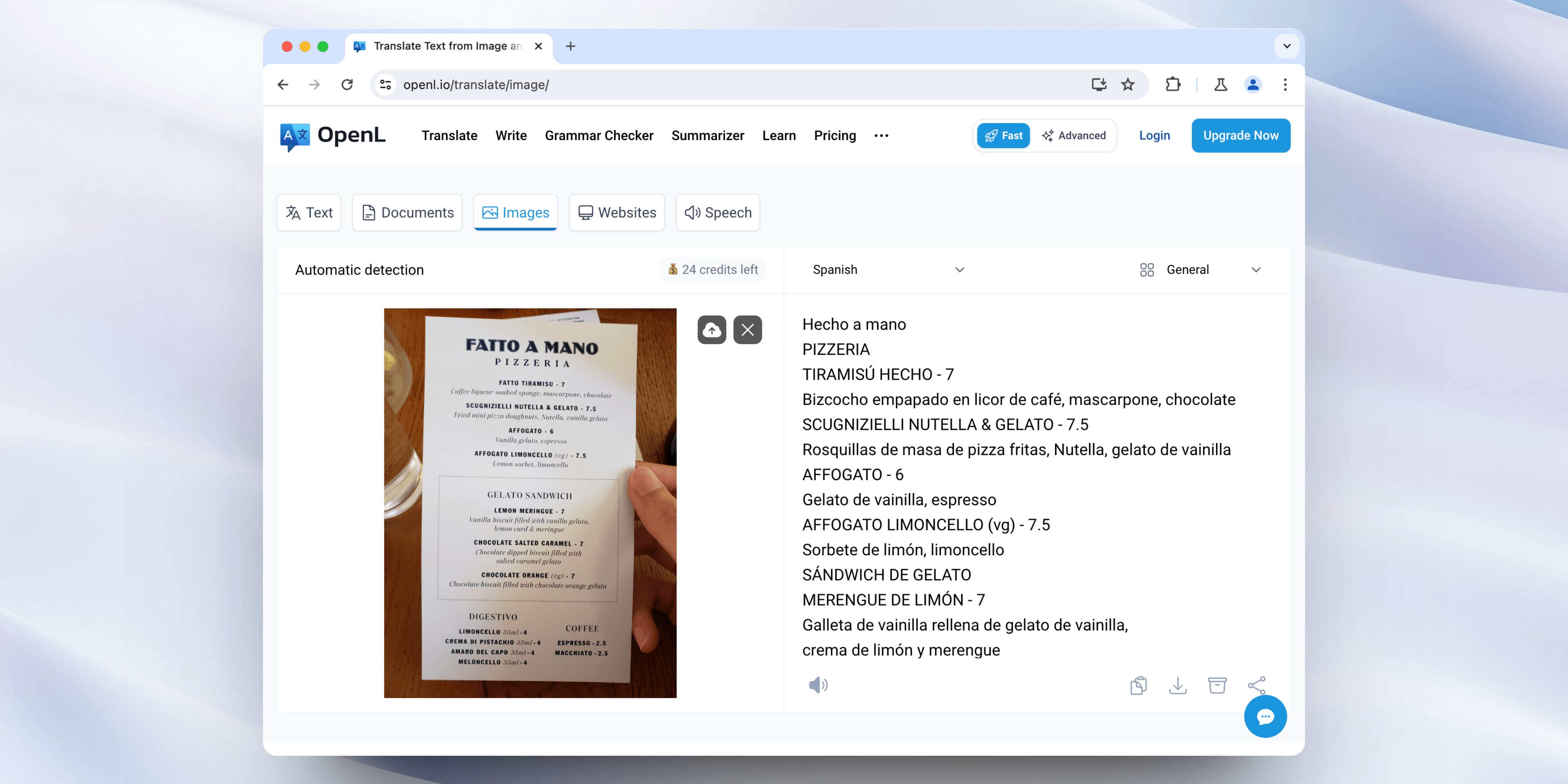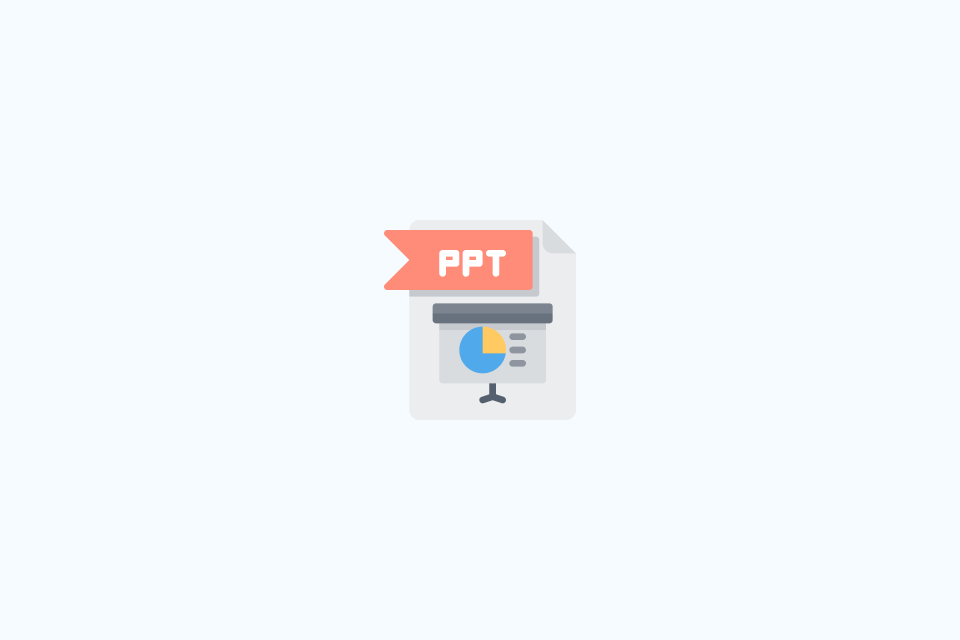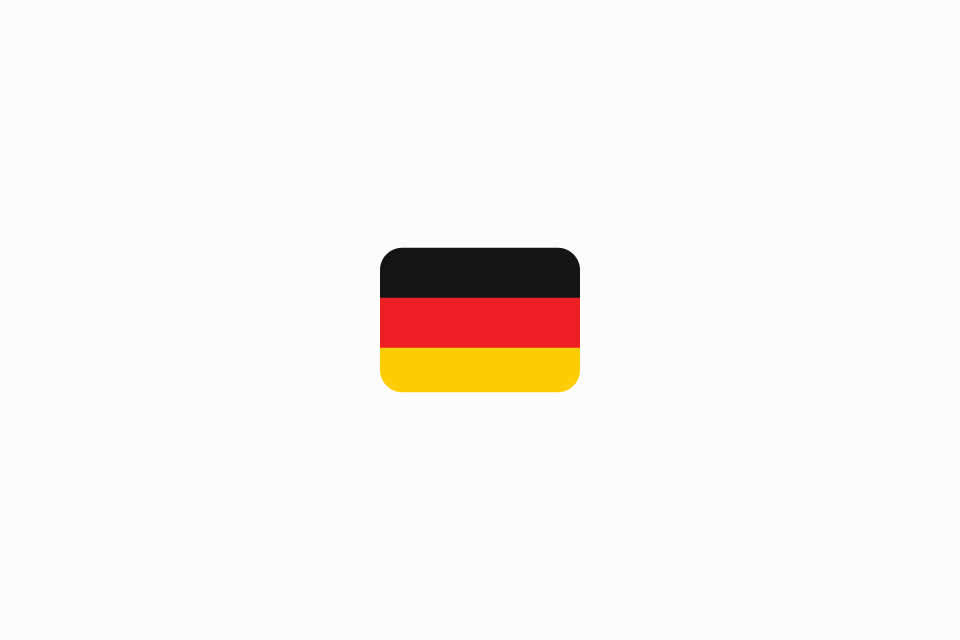How to Translate Text from Images and Photos

TABLE OF CONTENTS
Stuck trying to read a foreign menu? Need to understand a street sign abroad? Whether you’re traveling, studying, or working with international documents, translating text from images has never been easier. This guide shows you how to capture, extract, and translate text from any photo in seconds using OpenL Translate.
What you’ll learn:
- Professional photo capture techniques for accurate translations
- Step-by-step workflows for desktop and mobile
- Troubleshooting tips for challenging images
- When to use AI vs. professional translation
Why Choose OpenL for Image Translation?
OpenL Translate delivers fast, accurate translations from photos with features designed for real-world use:
✓ Instant recognition - Get translations in under 3 seconds
✓ 100+ languages - From Spanish to Japanese, Arabic to Hindi
✓ Smart auto-detection - No need to guess the source language
✓ Audio playback - Hear pronunciations in 40+ languages
✓ Session history - Access recent translations without re-uploading
Unlike basic OCR tools, OpenL preserves formatting, handles multiple scripts, and maintains accuracy even with stylized fonts.
Step 1: Capture Clear Reference Photos
90% of translation errors come from poor image quality, not the AI. Follow these professional tips:
Essential Photo Techniques
1. Stabilize Your Shot
- Rest your phone on a surface or use both hands
- Use your camera’s timer to eliminate shake
- Avoid zooming—move closer instead
2. Optimize Lighting
- Natural daylight gives the best results
- Avoid direct flash on glossy surfaces (creates glare)
- Shoot at a slight angle if dealing with reflections
- Indoor tip: Position yourself between the light source and the text
3. Frame Text Properly
- Keep text lines horizontal (not tilted)
- Fill 60-80% of the frame with the text area
- Leave small margins—don’t crop too tightly
- Multiple signs? Take separate photos for each
4. Check Image Quality
- Zoom in on your preview to verify text is sharp
- Retake if you see motion blur or focus issues
- Minimum recommendation: 1080p resolution
Pro tip: Take 2-3 shots from slightly different angles. You can upload the clearest one later.
Step 2: Translate on Desktop (Existing Photos)
Perfect for documents, downloaded images, or photos transferred from your camera.

Quick Workflow
-
Open OpenL Translate
Navigate to openl.io/translate/image in any modern browser -
Select Target Language
Choose what you want to read (e.g., English, Spanish, Chinese)
OpenL auto-detects the source language—no guessing needed -
Upload Your Image
- Drag and drop, or click Upload image
- Supported formats: PNG, JPG, WebP (up to 10 MB)
- Processing takes 2-5 seconds
-
Review Results
See original and translated text side-by-side
Edit or copy directly from the interface -
Save or Share
- Copy - Paste into documents, emails, or notes
- Download - Get a
.docxfile for editing - History - Access via the clock icon (saved during your session)
Use Cases
- Translating scanned documents or PDFs
- Converting presentation slides for reports
- Processing product labels for e-commerce listings
- Translating screenshots from videos or webinars
Step 3: Translate Using Your Phone Camera (Real-Time)
The fastest way to translate signs, menus, and labels while on the go.
Mobile Workflow
-
Access OpenL on Mobile
Visit openl.io/translate/image in your phone’s browser
Tip: Add to home screen for instant access -
Use Camera Directly
Tap Upload image → Take Photo
OpenL opens your camera—no app download needed -
Capture and Crop
- Frame the text you need translated
- Confirm the shot
-
Get Instant Translation
Select output language → View results in seconds -
Take Action
- 📋 Copy - Paste into messaging apps
- 🔊 Listen - Tap speaker icon for audio (40+ languages)
- ⬇️ Download - Save as text file
Real-World Scenarios
Traveling: Restaurant menus, museum signs, transportation schedules
Shopping: Product ingredients, care instructions, package labels
Business: Conference materials, foreign business cards, invoices
Education: Textbook pages, study notes, exam questions
Advanced: Extract Text for Editing
Need more than a quick translation? These workflows help you create editable, formatted content.
Professional Document Processing
For Reports and Presentations:
- Download translated text from OpenL
- Import into Google Docs or Microsoft Word
- Apply formatting, fonts, and layout
- Perfect for subtitles, captions, or meeting summaries
For Multi-Page Documents:
- Translate each page image individually
- Compile extracted text into a single document
- Use OpenL’s PDF translator to preserve original formatting
- Export as formatted PDF with translated text
For Screenshot Workflows:
- Capture presentation slides during meetings
- Upload to OpenL for instant translation
- Add translated bullet points to your notes
- Share bilingual summaries with team members
Character Support: OpenL maintains accented letters (é, ñ, ü), right-to-left scripts (Arabic, Hebrew), and CJK characters (Chinese, Japanese, Korean) through the entire process.
Troubleshooting: Fix Common Issues
Problem: Blurry or Incomplete Text
Causes: Motion blur, poor focus, low resolution
Solutions:
- Retake photo with camera stabilized
- Increase your phone’s photo quality settings
- Move closer instead of using digital zoom
- Clean your camera lens
Problem: Glare or Shadows Obscure Text
Causes: Direct light sources, reflective surfaces
Solutions:
- Shoot at a 15-30° angle to reduce glare
- Use indirect/diffused lighting (cloudy days are perfect)
- Block overhead lights with your body
- Try different times of day for outdoor signs
Problem: Handwritten or Decorative Fonts
Causes: OCR works best with printed text
Solutions:
- Use highest camera resolution available
- Take multiple shots from different distances
- Manually verify numbers, names, and critical data
- Consider professional transcription for important documents
Problem: Mixed Languages in One Image
Causes: Signs with multiple language sections
Solutions:
- Use crop tool to isolate one language at a time
- This helps OpenL select the correct source language
- Translate each section separately for accuracy
Problem: Slow Processing or Upload Errors
Causes: Large file size, poor connection
Solutions:
- Connect to Wi-Fi before uploading
- Compress images over 5 MB using your phone’s editor
- Close other apps consuming bandwidth
- Try during off-peak hours if possible
Privacy and Security Best Practices
OpenL takes privacy seriously, but you should also follow these guidelines:
⚠️ Before Uploading:
- Confirm you have permission to capture and translate content
- Check if the document contains confidential information
- Review your organization’s data sharing policies
🔒 After Translating:
- Delete local copies of sensitive images
- Clear your browser history if using a shared device
- Avoid uploading personal data, medical records, or legal documents without authorization
💼 For Business Use:
- Use OpenL for internal reference, not official communications
- Don’t upload proprietary information or trade secrets
- Consider enterprise solutions for regular business translation needs
When to Use AI vs. Professional Translation
Use OpenL for:
✓ Instant comprehension while traveling
✓ Quick reference translations
✓ Personal use and informal communication
✓ First drafts before professional review
✓ High-volume, low-stakes content
Hire a Professional Translator for:
✓ Legal contracts or court documents
✓ Medical records or prescriptions
✓ Marketing materials for publication
✓ Customer-facing content requiring brand consistency
✓ Technical manuals with industry-specific terminology
Best Practice: Use OpenL to create the first draft, then export the text to brief a professional translator who will refine terminology, tone, and cultural nuances.
Quick Reference Checklist
Before You Start:
- Camera is clean and steady
- Lighting is even (no harsh shadows)
- Text is horizontal in frame
- Background distractions are minimal
During Translation:
- Choose correct target language
- Crop image to focus on text
- Review translation for obvious errors
- Use audio playback to verify pronunciation
After Translation:
- Copy or download result
- Access history if needed during session
- Delete sensitive images from device
- Consider professional review for important content
Frequently Asked Questions
Q: How many languages does OpenL support?
A: OpenL supports 100+ languages including Spanish, French, German, Chinese, Japanese, Arabic, Hindi, Russian, and many more. The system auto-detects the source language.
Q: Is there a limit to how many images I can translate?
A: The free version allows unlimited translations. For high-volume professional use, check OpenL’s pricing for enterprise options.
Q: How accurate is the translation?
A: Accuracy depends on image quality and language pair. For common languages with clear text, expect 90-95% accuracy. Always verify critical information manually.
Q: Can I translate handwritten text?
A: OpenL works best with printed text. Handwriting recognition is possible but less reliable—results vary based on legibility.
Q: Does OpenL work offline?
A: No, OpenL requires an internet connection to process images and access translation models.
Q: What’s the maximum file size?
A: The free version supports up to 10 MB per image. The paid version supports 30 to 100 MB per image.
Get Started Now
Ready to translate your first image? Visit OpenL Translate and upload a photo in seconds—no account required.


